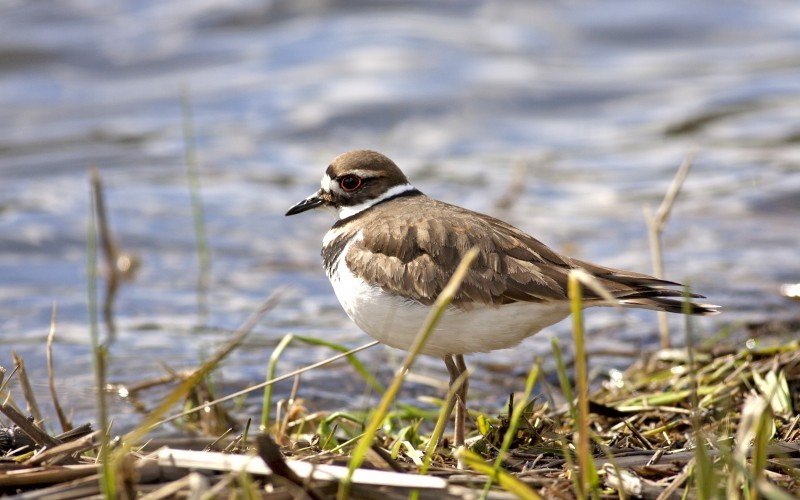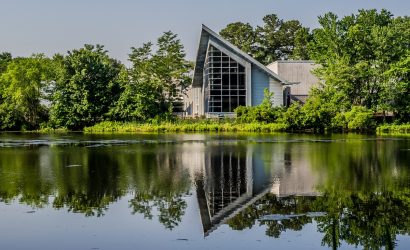Despite the blustery weather conditions, the Eastern Shore has become a chilly bird watchers paradise. For various reasons, there has been an increase in the number of diverse feathered species flocking to our area, giving us a unique look at these beautiful birds. Whether you sat out in a field to catch a glimpse or spotted one by chance on your drive to work, bird sightings have become common occurrences in our region. We at ShoreBread took this opportunity to find out why so many of our feathered friends have stopped by to pay a visit lately.
Maryland’s Eastern Shore is a prime location for birds to stop in the Atlantic Flyway. This flyway is one of four other bird migration patterns that are seen throughout America. The other paths include the Mississippi Flyway, the Central Flyway, and the Pacific Flyway, each named after the geographic location that birds migrate through. The Atlantic Flyway in particular stretches from Eastern Canada to the Caribbean. The Eastern Shore is conveniently placed in the middle of this avian journey and is a prime destination for migrating birds.
Situated in our perfect bird watching location, area locals get to see dozens of different species flock to the Shore. Soaring above us, we can see species ranging from songbirds like the robin to birds of prey such as hawks and ospreys. The Semi-palmated Sandpiper uses our area as a pit stop on its long journey from the North to the South. In the summer, this little aquatic bird nests in the southern tundra of Alaska and Canada then flies to South America in the winter.
The Bay region is not only a great place for birds to rest their wings but also to refuel. Within our many waterways and forests, birds find tons of fresh food to eat while stopping at the Shore. Due to the record breaking freezing conditions this year, many birds have stopped specifically in the Chesapeake Bay. The water here has not completely frozen over as it has in the Susquehanna and thus birds like geese are still able to catch fish to eat. This phenomena has brought a larger than usual number of geese and has created a terrific hunting season.
Although hunting helps to control the wildlife population, the numbers of birds has been dwindling in recent years due to habitat loss and pollution. In order to help our feathered friends, there are a number of eco-friendly activities we can do to insure their return every year. For example, building a backyard habitat with shrubbery, trees, and birdhouses provides easy nesting places for birds to call home. Also, choosing to plant vegetation that produces berries and seeds in the winter is a great way to feed birds as well.
Many coffee plantations in South America also contribute to habitat loss for migrating birds. By buying shade grown coffee, you can help to stop the destruction of rain forests. Also by using fewer chemicals in our lawns and yards such as fertilizers and pesticides, we can lower the amount of chemicals that seep into our waterways and that effect the birds.
The government has become involved in helping the migrating fowl as well. NASA, the agency usually associated with lunar landings, has satellite equipment that can follow the migratory patterns of flying birds. The NPOL radar, or the NASA Polarimetric weather radar, is normally used for tracking precipitation but can also detail the size, speed, and direction of flying birds. This radar in particular has just been set up in Newark, Maryland, near Berlin. With the help of students from Old Dominion University and the University of Delaware, who will be conducting field research, the team hopes to learn more about what migrating birds eat and where they stay on their visit.
There are also several events to raise awareness for these flying species. May 6th is International Migratory Bird Day when many nature and ecological groups celebrate the beauty of these species and promote actions that can be taken to stop their populations from declining. The Black Water Refuge in Cambridge (a great place to go bird watching) also throws an International Migratory Bird Day event that helps get the word out.
At ShoreBread we are always interested to learn more about our flying friends and we are anticipating a trip to the Ward Museum in the near future. Besides, these birds really are friends to the Shore, they may have bigger numbers than the tourists who visit, but they don’t block up the traffic or mind the shoulder season. However, if we hope to see any birds during these cold winter months, its going to have to be while we are sipping our hot chocolate and using our binoculars to spot birds out our windows until temps get back out of the freezing range.









